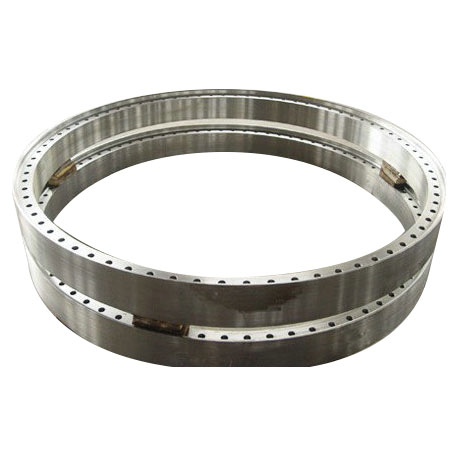Harnessing Nature's Force: The Impact of Environmental Factors on Large Diameter Wind Power Flange Design
2024-03-21
In the pursuit of clean and sustainable energy, wind power emerges as a beacon of hope, tapping into nature's renewable resources to generate electricity. At the core of wind turbine systems lies a critical component: the large diameter wind power flange. These flanges not only anchor the towering structures but also withstand the relentless forces of wind and weather. However, the design and performance requirements of these flanges are intricately tied to environmental factors such as wind conditions and geographical location. Let's explore how these environmental variables shape the design and performance of large diameter wind power flanges.
1. Wind Conditions:
Wind is the primary driving force behind wind energy generation, and wind conditions exert a profound influence on the design and performance requirements of large diameter wind power flanges. Factors such as average wind speed, gustiness, turbulence intensity, and wind directionality dictate the magnitude and variability of loads experienced by wind turbine towers and flanges. Flange designs must be engineered to withstand the dynamic and often unpredictable forces of wind, ensuring structural stability and reliability under varying wind conditions.
2. Wind Resource Assessment:
Conducting a comprehensive wind resource assessment is crucial in determining the optimal design specifications for large diameter wind power flanges. Site-specific wind data, obtained through meteorological studies, remote sensing technologies, and historical records, provide valuable insights into wind patterns, frequency distributions, and extreme events. Engineers use this data to calculate design loads, assess fatigue life, and optimize structural configurations to withstand the prevailing wind conditions at the project site.
3. Terrain and Topography:
Terrain and topography play a significant role in shaping wind flow patterns and turbulence levels, thereby influencing the design requirements of large diameter wind power flanges. Complex terrain features such as hills, valleys, ridges, and obstacles can cause wind speed variations, wind direction changes, and turbulence effects, posing challenges for flange stability and performance. Engineers must account for these terrain effects when designing flanges and implementing mitigation measures to minimize their impact on turbine operation.
4. Coastal and Offshore Environments:
Coastal and offshore environments present unique challenges and opportunities for large diameter wind power flange design. Coastal sites are characterized by corrosive salt spray, high humidity, and harsh weather conditions, necessitating corrosion-resistant materials and protective coatings to mitigate corrosion and extend flange lifespan. Offshore installations face additional challenges such as wave loading, marine growth, and foundation stability, requiring robust flange designs capable of withstanding marine environments and dynamic loading conditions.
5. Extreme Weather Events:
Extreme weather events, including hurricanes, typhoons, and severe storms, pose significant risks to wind turbine infrastructure and large diameter wind power flanges. These events generate extreme wind speeds, storm surges, and atmospheric pressures that can exceed design limits and cause catastrophic damage to flange connections and tower structures. Engineers employ advanced design methodologies, such as probabilistic risk assessment and extreme event modeling, to ensure that flanges are resilient to extreme weather conditions and maintain operational integrity under severe loading scenarios.
6. Climate Change Considerations:
Climate change introduces additional uncertainties and complexities into the design and performance requirements of large diameter wind power flanges. Changing weather patterns, shifting wind regimes, and increasing frequency of extreme events necessitate adaptive design strategies and resilience measures to future-proof wind turbine infrastructure. Engineers must account for long-term climate projections and incorporate climate resilience into flange design to ensure continued reliability and performance in a changing climate.
In conclusion, environmental factors such as wind conditions, geographical location, terrain characteristics, and extreme weather events exert a significant influence on the design and performance requirements of large diameter wind power flanges. By carefully considering these environmental variables and leveraging advanced design methodologies, engineers can develop flanges that are robust, resilient, and capable of withstanding the forces of nature, ensuring the continued success and sustainability of wind energy as a clean and renewable power source.



